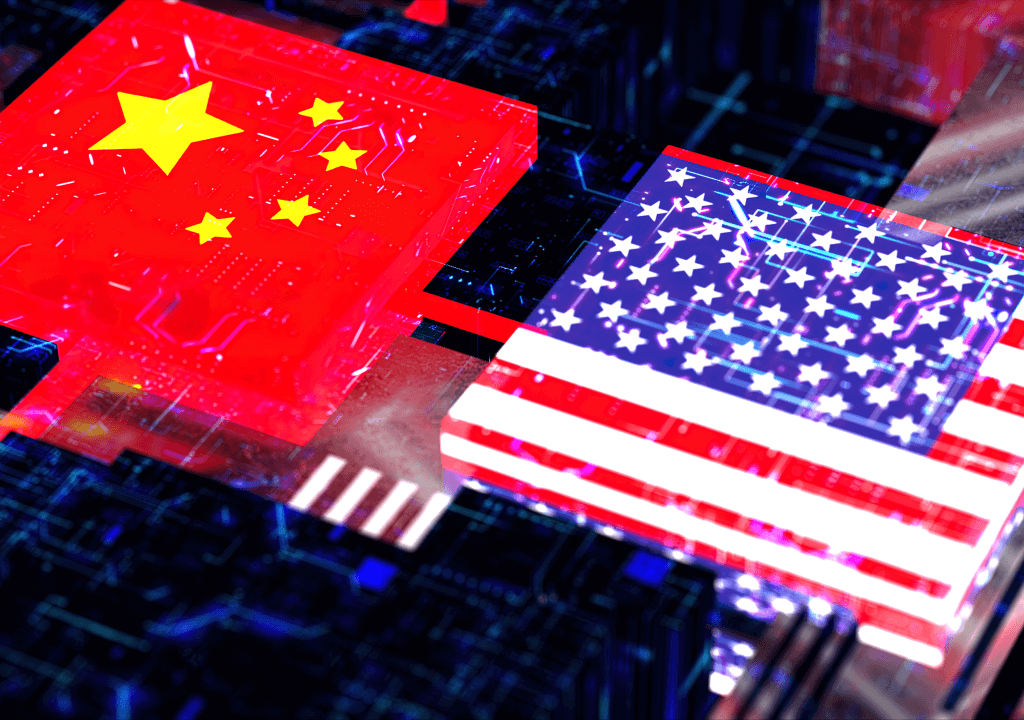The perpetual struggle for supremacy among nations often culminates in tragic and devastating conflicts. However, in the realm of science, this rivalry proves beneficial, as the nation at the forefront of innovation typically emerges as a global leader. This dynamic prompts governments to allocate substantial resources for research and development.
Throughout history, the competitive landscape of science has propelled progress.. Nazi Germany’s advancements in aircraft research, for instance, spurred the United States to enhance its own aircraft technologies. Similarly, the Cold War between the U.S. and the Soviet Union fueled significant progress in space science, consequently advancing capabilities in various fields such as agriculture and medicine.
After the dissolution of the USSR, a period of stagnation gripped innovation, lacking the competitive impetus that had driven progress. However, the rise of China as a formidable force in the early 21st century, particularly excelling in technology, artificial intelligence, and space exploration bring back good days for science. China’s ambitious pursuits compelled the United States to readjust its research focus, breaking free from years of relative stagnation.
However, there are indications that the Chinese economy might be faltering. This situation makes one wonder what impact it might have on the pace of technological development and what shape future global innovation will take.
While Chinese leaders address the economic challenges, they are not putting their feet back in embracing the technology. China’s policy decisions are channeled through the Chinese National Assembly, colloquially referred to as the “Two Sessions.” Last week’s deliberations during the “Two Sessions” are expected to yield additional policies aimed at bolstering science and technology, forming a pivotal component of a broader strategy to enhance economic growth. As the legislative and top political advisory bodies convene, a fervent discussion ensues concerning China’s technological development and the potential threat posed by the “Middle-technology Trap.”
The “Middle-technology Trap” involves the peril of developing nations initially benefiting from the transfer of industrial capabilities but encountering prolonged stagnation in catching up with technologically advanced nations, sparking a spirited debate. China’s pursuit of high-quality economic development is intricately linked with technological advancements. While some argue that the substantial gap between China’s technological capabilities and the West fuels the discourse, opposing views question the accuracy of the middle-technology trap concept in portraying China’s current status. This skepticism arises from instances where China has surpassed the United States in certain technological aspects.
The ongoing discussions reflect China’s nuanced approach to navigating the challenges and opportunities in its technological journey. China aims for a delicate balance between self-reliance and global collaboration to propel its development, showcasing a strategic and multifaceted perspective on the evolving landscape of technology and its role in the nation’s progress.
China’s standout technological achievement is in the realm of electric vehicles (EV). Chinese outbound foreign direct investment (OFDI) in the EV value chain has experienced significant growth, and Chinese companies’ expects dominance in high-tech industries expanding overseas.
The surge in Chinese EV investments abroad can be attributed to a combination of “Pull” factors abroad and “Push” factors within the Chinese market. International car manufacturers in Europe and the US prefer proximity between battery makers and their plants to mitigate supply chain disruptions and reduce transportation costs. Chinese battery manufacturers, possessing the necessary technology and capital, are well-positioned to meet this demand. Simultaneously, the deceleration and increasing saturation of China’s domestic EV market serve as additional incentives for Chinese EV companies to explore overseas opportunities. With a concurrent rise in global EV adoption, leading Chinese EV companies, spanning raw material refiners, battery material producers, battery manufacturers, and EV producers, are actively targeting international markets.
Notably, BYD stands out as the world’s largest EV car producer, continually advancing technologies, vehicles, and batteries within China’s robust research centers. The reliance on subsidies and support from the Chinese government is evident, providing a crucial boost for Chinese companies in research and development. When the Chinese economy undergoes a slowdown, there is a growing need for more market-driven funding, potentially impacting business operations.
China has emerged as a global leader in the development and utilization of artificial intelligence (AI). Whether in e-commerce, ride-hailing services, or autonomous vehicles, Chinese companies operating in these sectors are formidable global competitors, significantly contributing to China’s overall progress. Chinese policymakers have implemented a comprehensive set of regulations focused on data and consumer protection. These regulations aim to ensure the responsible use of technologies and prevent market abuses by dominant players. China’s regulatory framework, in terms of scope and breadth, currently outpaces that of leading counterparts in Europe and the United States.
When we are talking about data security we have to consider the government level data breaching too. The alignment of interests between autocratic governments and AI technology is notable. Autocratic rulers seek the ability to predict the whereabouts, thoughts, and behaviors of citizens – a fundamental aspect of AI technology. This shared purpose creates a synergy between AI technology and autocratic governance. Given the significant data dependence of AI, regimes with authoritarian tendencies, known for extensive data collection, hold a distinct advantage. Companies with Chinese government contracts can leverage state data to enhance commercial projects.
China is poised to intensify research and development in advanced space technology, with potential implications for the country’s economy and national security. Scheduled for 2024, China’s lunar mission aims to retrieve the first-ever samples from the moon’s far side. Additionally, plans include sending Chinese astronauts to the moon by 2030 and establishing an international lunar research station. China has made remarkable strides in its space endeavors, achieving notable success in key programs such as the independently-run manned space station Tiangong, the Beidou Navigation Satellite System, and lunar and Mars exploration initiatives. And it provoked the US to reinvigorate their space missions.
China aims to explore outer space to expand humanity’s understanding of Earth and the cosmos. Simultaneously, the program seeks to foster global consensus on responsibly utilizing outer space for peaceful purposes and ensuring its security for the benefit of humanity. Additionally, the mission includes meeting the demands of economic, scientific, and technological development, national security, and social progress.
China’s major achievements in space science include the successful operation of the Beidou Navigation Satellite System, the high-resolution earth observation system, advancements in satellite communications and broadcasting, the completion of the lunar exploration program, and the establishment of China’s own space station. Notably, the Tianwen-1 Mars probe and the Zhurong Mars rover have marked China’s entry into interplanetary exploration.
Looking ahead, China aims to integrate space science, technology, and applications to support the new development philosophy and meet high-quality development requirements. Initiatives include upgrading Long March carrier rockets for non-toxic and pollution-free launches, deploying smarter modular technology, and introducing new-generation manned carrier rockets and high-thrust solid-fuel carrier rockets.
Preparations for the Chang’e-6 lunar mission are progressing smoothly, with plans for a relay satellite deployment in early 2024. The Chang’e-8 mission in 2028 invites global collaboration for unmanned lunar expeditions, emphasizing cooperation in spacecraft launch, orbit operation, spacecraft-to-spacecraft interactions, and lunar surface exploration. The mission aims to gather valuable data for the construction of a permanent international research station on the lunar south pole by 2040, aligning with China’s broader ambition to become a major space power.
Despite China’s rapid economic growth driven by technological advancements borrowed from developed economies and Russia, lingering concerns persist. It is clear that fostering innovation, optimizing incentive structures, and refining review systems are critical for maintaining this growth. Even in sectors where China holds a leading position, such as electric vehicles, the reliance on foreign technology underscores potential gaps in achieving complete self-sufficiency. But, it’s clear, China acknowledges the pivotal role of science and technology in its growth trajectory and is unwavering in its commitment to ensuring their sustained development. Prognostications indicate that China’s future growth in high technology will involve a wide range of industries, including manufacturing, biotechnology, green technology, internet, robots, artificial intelligence, and material science. Certain analysts contend that the present-day anxiety surrounding China’s artificial intelligence breakthroughs is reminiscent of earlier concerns regarding Soviet technology developments. They propose that these concerns might potentially propel technological growth in the United States by fostering the creation of increasingly sophisticated technologies.








